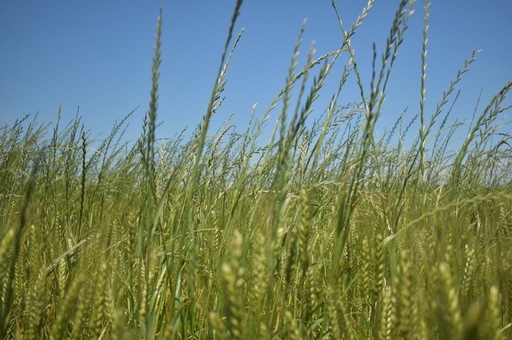Scouting for Weeds
Timely weed scouting tells you
- What weed species are in a field,
- Where they are, and
- Weed density
All of these pieces of information are very important to design a management program that fits the specific needs of that field.
Scout early, scout often:
Since many weed species become more challenging to manage as they get larger, scouting should start early, and be repeated at several key times throughout the season, in order to catch weeds when they are young. Herbicide applications are rarely effective against mature weeds, increasing management costs.
Weed species identification:
Accurate weed ID is important for effective management because herbicide recommendations vary according to species, as do some mechanical, cultural, and biological strategies. Some species can look similar to each other from afar, but may have drastically different management requirements. They should be examined closely before choosing herbicide programs. Weed identification resources are available here, or by contacting your state’s extension weed science specialist.
Scouting procedure:
The goal when scouting is to note the weed populations throughout the whole field. For a 100-acre field, make 5-10 stops across the field. At each stop, walk 10 paces (or 30 feet) and record the following:
- Weed species present
- Weed size/height and life stage
- Lifecycle (summer annual, winter annual, perennial)
- Severity of the infestation based on number of plants (low, medium, high)
Scouting prior to cash crop planting:
Scout fields prior to planting in order to:
- Ensure the burndown treatment was effective before weeds become too large control effectively with chemicals
- Evaluate the potential need for alternative pre-plant weed management strategies such as tillage
- Ensure that crop seeds are being planted into weed-free fields (“start clean”)
Scouting after cash crop planting:
Scout soon after planting to determine the efficacy of preemergence and to decide if further treatments are necessary at this time.
Determine if postemergence treatment is needed:
Weed emergence can continue over weeks or months. Even if preemergence herbicides were applied and the field received timely rainfall for incorporation, fields should be scouted about four weeks after planting for need of additional weed management. Be sure to note weed species and height, in order to maintain effectiveness of herbicide treatments and minimize competition with the crop.
Scouting for resistance:
Scout for weed species that are known to have herbicide resistance, especially if they have been sighted in your area or county. Failure of an herbicide application to control a weed does not necessarily mean it’s herbicide-resistant. While genetic resistance must be confirmed through laboratory testing, these signs can be evidence of potential resistance:
- Spreading area of a single weed species;
- Failure of an herbicide application to control a weed species that it is usually effective at the applied dose, especially if other surrounding weeds are successful controlled
- Within the same weed species in the same field, some plants survived while the rest died.
If you suspect resistant weeds, contact your local extension agent. Collect a sample and provide them with information about the field conditions and the size of the weed population. If there are only a few plants, remove them from the field before they have a chance to shed seed.
Weed & crop scouting apps:
Numerous crop scouting apps have been developed for smartphones and tablets, and some of them are particularly useful for recording weed info and conducting doing weed ID in the field.
Here are some examples from the public sector:
This app was developed for scouting weeds, insects, diseases and plant disorders in soybean, corn and wheat. Created by three Iowa State University graduates, during their time at the university, ScoutPro operates via a partnership with Iowa State and Kansas State University Extension.
This app, developed jointly by the Oklahoma State University App Center and university faculty, quantifies the amount of green vegetation in a plant’s canopy, through smartphone photos. Although not specifically designed for weeds, its information can be used to monitor a crop’s growth, evaluate damage and adjust management decisions.
For more information on weed scouting and mapping click on the button below:
















































